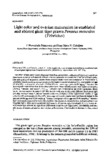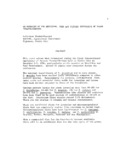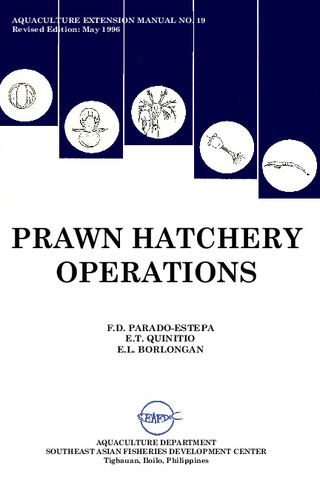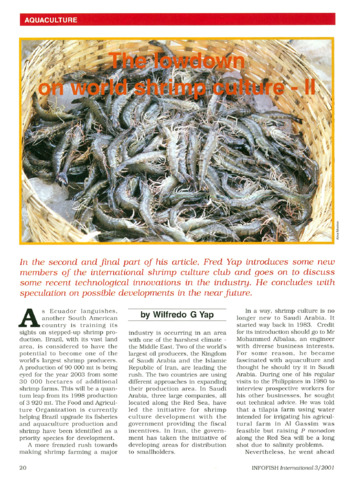Light color and ovarian maturation in unablated and ablated giant tiger prawn Penaeus monodon (Fabricius)

View/
Request this document
Date
1992Page views
214Metadata
Perlihat publikasi penuhCited times in Scopus
Share
Abstract
The effect of light color (green, blue and white fluorescent lights, with natural light as a control) on maturation in intact and eyestalk-ablated Penaeus monodon was tested in 12-m3 broodstock tanks. Size and quality of sequential spawns from ablated females were also compared. In Experiment 1, unablated females under green light produced the highest number of spawns (5), total number of eggs (4.26 × 106), total number of nauplii (2.69 × 106) and mean egg counts (6537 eggs g−1 female), the latter significantly higher than in the other treatments. Mean nauplii counts were higher under green (3979 g−1 female) and natural (3303 g−1 female) light compared to the other treatments. Mean hatch rate was highest in control (87.3%) but this was not significantly different from green light (61.8%). In Experiment 3, ablated females under natural light gave the highest total number of eggs (13.04 × 106) and nauplii (9.74 × 106). Mean egg and nauplii counts were significantly higher in the natural (4436 eggs and 3308 nauplii g−1 female) and green (4016 eggs and 2906 nauplii g−1 female) light treatments compared to white. Hatchability was similar for all treatments. In Experiment 2 (using green light), ablation increased the total number of spawns, eggs and nauplii 14 to 17 times. Rematuration data showed no significant differences in spawn size (egg counts); hatchability and nauplii counts of sequential spawns were similar in Experiment 2 but tended to decrease in Experiment 3.
Suggested Citation
Primavera, J., & Caballero, R. M. V. (1992). Light color and ovarian maturation in unablated and ablated giant tiger prawn Penaeus monodon (Fabricius). Aquaculture , 108(3-4), 247-256. https://doi.org/10.1016/0044-8486(92)90110-7
Subject
Taxonomic term
Koleksi
- AQD Journal Articles [1240]
Related items
Showing items related by title, author, creator and subject.
-
An overview of the nutrition, feed and feeding techniques of prawn penaeid/shrimps
Piedad-Pascual, Felicitas (Philippine Council for Aquatic and Marine Research and Development, 1989)This paper echoes what transpired during the first International Conference of Penaeid Prawns/Shrimps held in Iloilo City in December 4-7, 1984, particularly on the Nutrition nd Feed Development. Around 25 papers were ... -
Prawn hatchery operations
Parado-Estepa, Fe D.; Quinitio, Emilia T.; Borlongan, Emeterio L. (Aquaculture Department, Southeast Asian Fisheries Development Center, 1996-05)The manual, an updated version of the 1984 SEAFDEC/AQD manual, presents the underlying principles and step-by-step instructions of prawn larval and post-larval rearing. The techniques described are not only applicable to ... -
The lowdown on world shrimp culture - II
Yap, Wilfredo G. (INFOFISH, 2001)This paper introduces some new members of the international shrimp culture club and goes on to discuss some recent technological innovations in the industry, particularly the polyculture of tilapia (mainly Oreochromis ...





